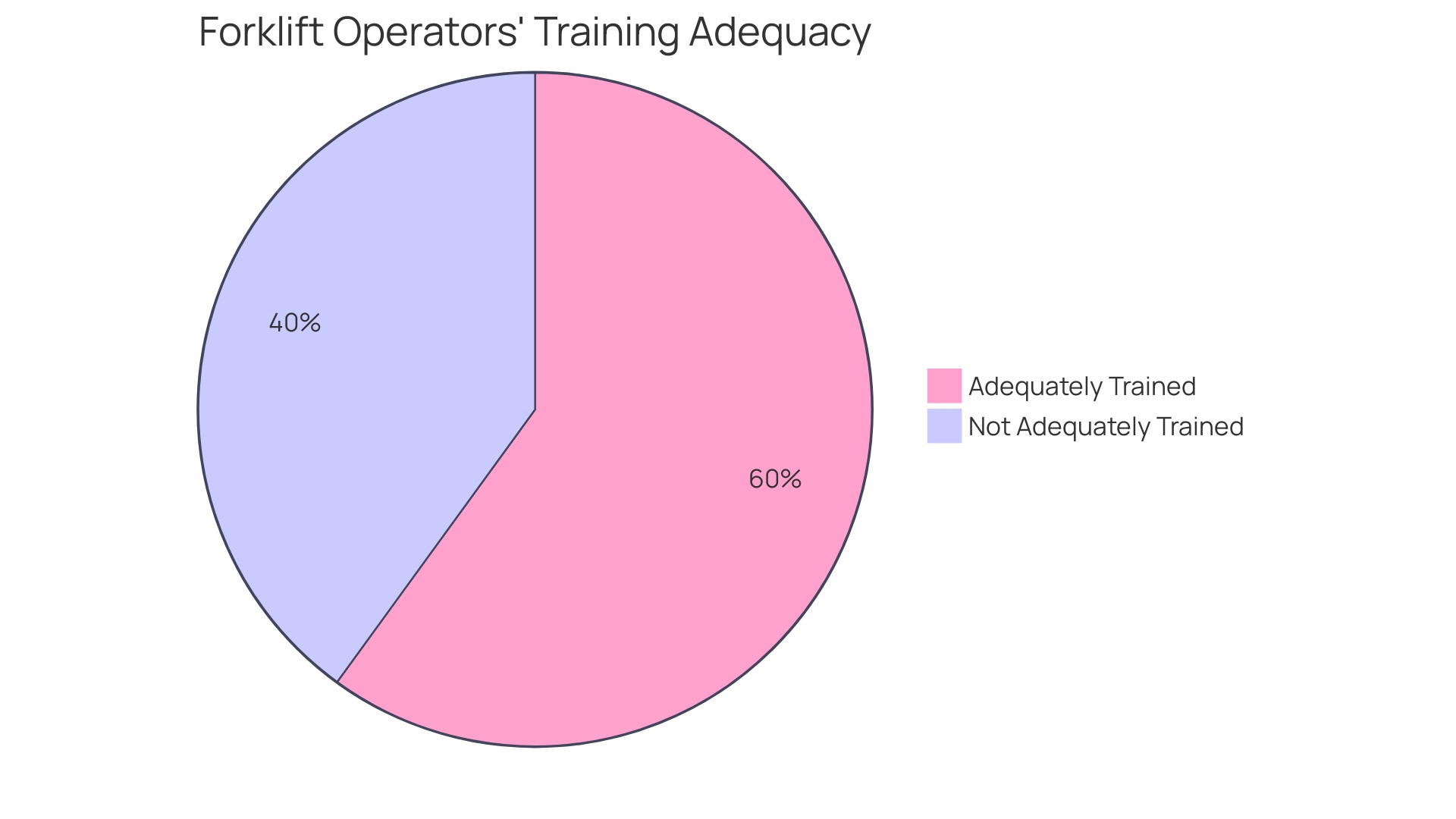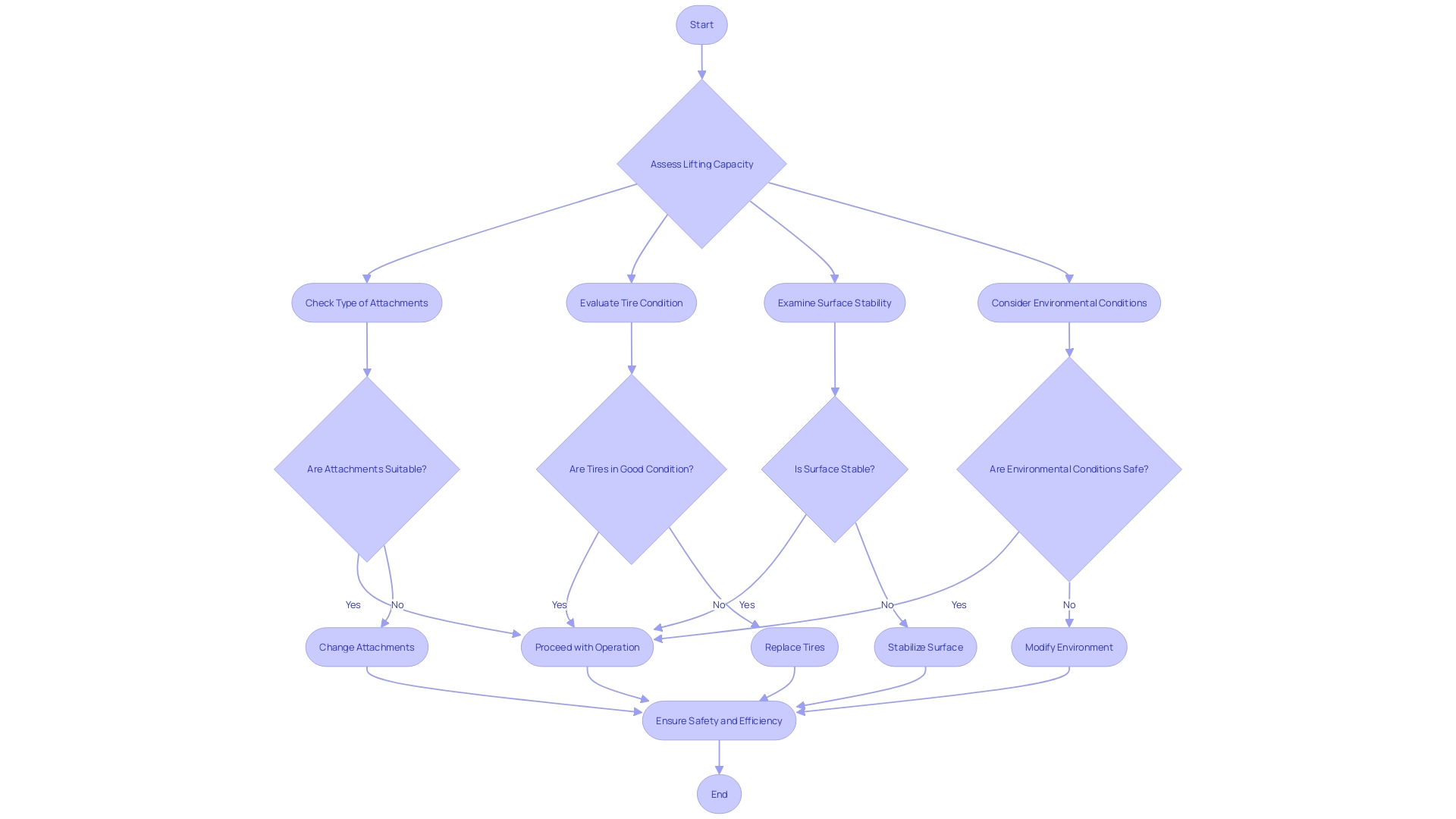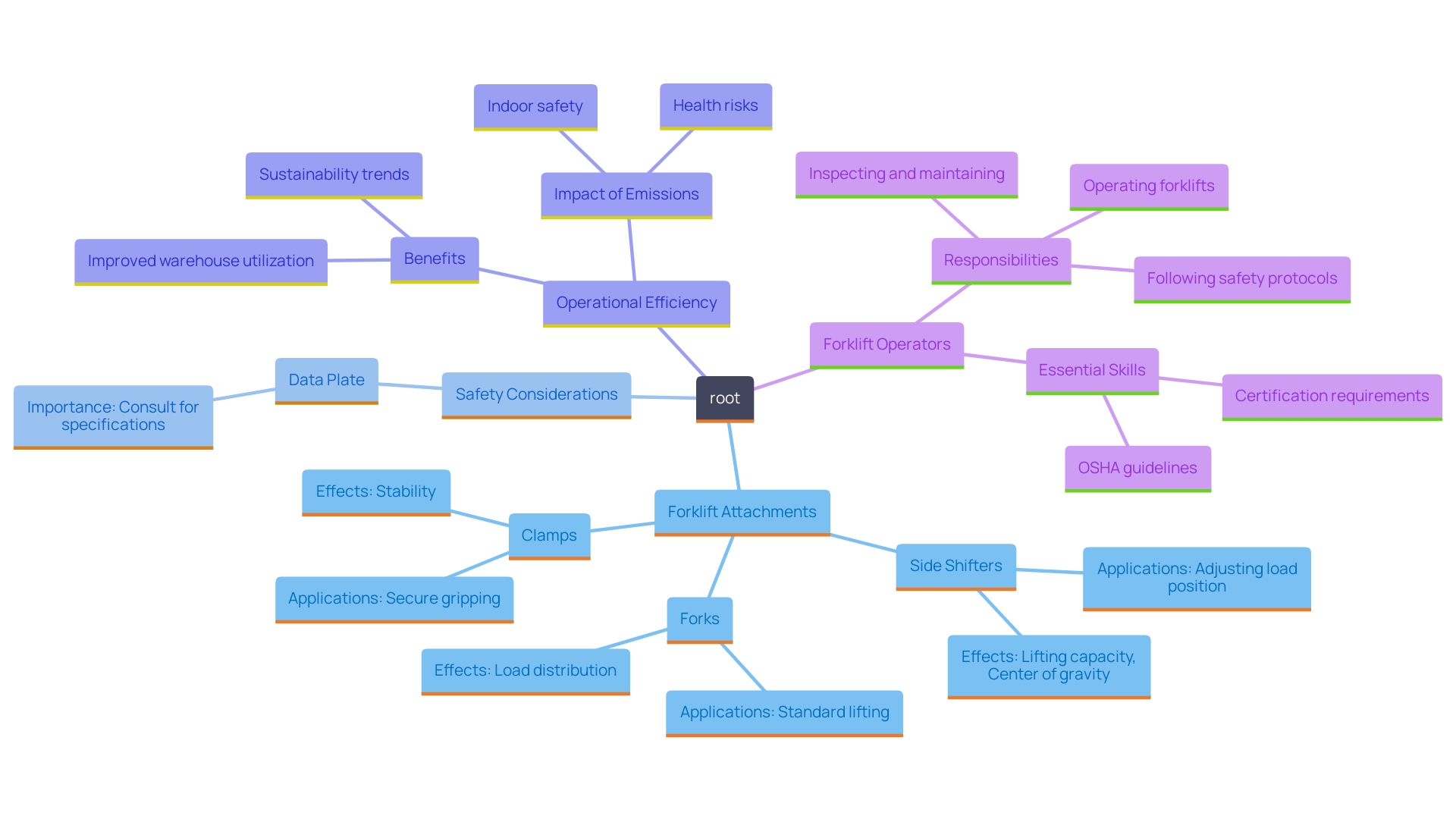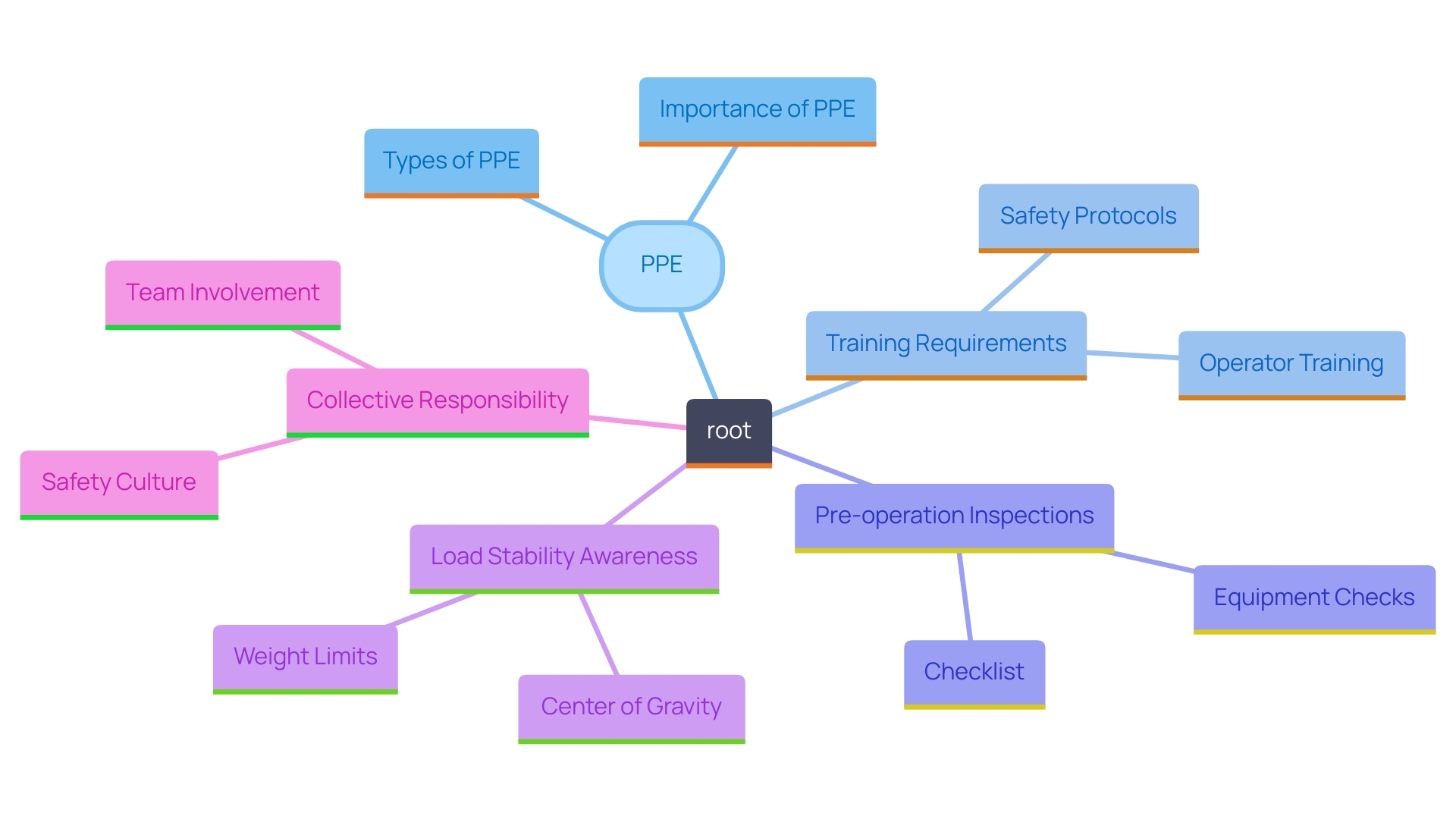Introduction
Understanding forklift capacity and its implications is paramount for maintaining safety and efficiency in diverse industrial settings. This article delves into the critical specifications that define a forklift's lifting capability, emphasizing the importance of load centers and the risks associated with exceeding rated capacities. With statistics highlighting the prevalence of workplace injuries due to improper practices, the necessity for rigorous operator training becomes evident.
Various factors affecting forklift performance, including attachments and environmental conditions, are explored to ensure operators can navigate challenges effectively. By prioritizing safety protocols and fostering a culture of accountability, organizations can significantly enhance workplace safety and operational efficiency. This comprehensive examination aims to provide valuable insights into maximizing forklift operations while minimizing risks.
Understanding Forklift Capacity and Load Center
'The capacity of the lifting machine is a critical specification that defines the maximum weight it can safely lift, contingent on a specified load center.'. The load center indicates the distance from the front of the forks to the load's center of gravity, playing a pivotal role in the safe operation of the equipment. For instance, a forklift rated for a 10,000-pound capacity typically achieves this at a 24-inch load center.
Grasping these parameters is crucial for upholding security and efficiency on job sites. Exceeding the rated capacity can lead to instability, resulting in tipping incidents that pose risks to both personnel and equipment.
Recent industry discussions highlight the significance of thorough personnel education and compliance with best practices in equipment management. As highlighted at safety gatherings, making certain that lift operators are well-trained can greatly improve workplace protection and operational efficiency. An absence of adequate instruction not only endangers security but can also result in expensive incidents and interruptions.
Statistics show that improper lifting practices contribute to numerous workplace injuries annually, reinforcing the need for a comprehensive understanding of forklift specifications and safe operational protocols. For instance, in a recent poll, a considerable portion of personnel admitted that they had not been provided sufficient instruction concerning load limits and precautionary measures. This gap in knowledge can have severe ramifications not only for the operators but also for the broader operational environment.
As observed in numerous case analyses, organizations that emphasize protection and invest in education have reported better involvement among their workforce, resulting in a more robust protective culture and improved operational effectiveness. For instance, PPG Industries shared how a fresh approach to risk assessment fostered greater engagement and safety awareness, highlighting the critical intersection of effective training and equipment operation.

Factors Affecting Forklift Capacity
The lifting capacity of a material handling vehicle is influenced by several critical factors that must be carefully assessed to ensure safe and efficient operation. Key among these is the type of attachments used; for instance, specialized attachments can significantly alter the vehicle's weight distribution and overall capacity. Furthermore, the state of the tires plays a crucial role; worn or damaged tires can compromise traction and stability, directly affecting the vehicle's performance under load.
The surface on which the forklift operates is equally important. Uneven or slippery surfaces can lead to instability, affecting the operator's ability to maintain control. Environmental factors, such as wind, further complicate these dynamics, especially in outdoor settings where gusts can destabilize lifting operations.
Statistics show that improper handling due to overlooking these factors can lead to accidents that not only cost money but also jeopardize safety. For example, an article highlighted how inadequate training related to these operational variables can result in significant workplace incidents. Thus, it is essential for operators to conduct thorough assessments of these factors before commencing operations, ensuring that the lifting device can maintain its rated capacity safely and effectively.

The Role of Attachments in Forklift Capacity
Forklift attachments significantly enhance operational versatility, allowing for a broader range of tasks beyond standard lifting. However, it is essential to recognize that each attachment can influence the lifting capacity of the vehicle. Common attachments include side shifters, forks, and clamps, each designed for specific applications. These attachments can alter the center of gravity and load distribution, which may impact overall lifting performance.
Grasping the implications of these changes is essential for preserving security and efficiency on the job site. It is advisable to consult the forklift's data plate, which provides vital information regarding weight limits and capacity adjustments associated with various attachments. Furthermore, advancements in technology and design have resulted in ongoing enhancements in attachment functionality, ensuring that operators can maximize their equipment's potential without jeopardizing security.
In addition to enhancing versatility, proper use of attachments can lead to improved warehouse utilization and operational efficiency, aligning with industry trends toward sustainable practices. As companies concentrate on optimizing storage while enhancing security, the appropriate attachments can play a crucial role in attaining these objectives.

Safety Considerations for Operating 10k Forklifts
Operating a 10k lifting machine involves a strict dedication to security that is essential in any industrial environment, especially in areas like manufacturing, logistics, and construction. Operators must equip themselves with appropriate personal protective equipment (PPE) to ensure their safety while handling heavy machinery. This includes hard hats, high-visibility vests, gloves, and steel-toed boots, which collectively shield them from potential hazards.
Adequate training is crucial for every lift truck operator. According to OSHA guidelines, certification is mandatory for those operating lift trucks, underscoring the importance of knowledge in safe operations. Operators should be well-versed in the mechanics of the lifting device and the specific safety protocols that govern its use. Inadequate training can result in incidents, making it essential for employers to emphasize thorough training programs that encompass all facets of lift operation.
Before commencing work, operators should conduct thorough pre-operation inspections. This includes checking for hydraulic leaks, assessing tire conditions, and ensuring brake functionality. Such inspections are vital in preventing operational failures that could lead to accidents or equipment damage.
Comprehending load stability is another essential element of lift truck operation. Operators must be trained to recognize how the weight and distribution of a load affect the forklift’s balance and maneuverability. Maintaining clear sightlines while maneuvering is equally important; operators should always be aware of their surroundings to avoid collisions and ensure safe navigation in busy work environments.
Participation in precautionary measures is a collective obligation among all team members. Companies are increasingly adopting comprehensive security cultures, as highlighted at recent conventions, where industry experts emphasized the importance of engaging employees in discussions and practices related to protection. This collective approach not only improves workplace security but also fosters a culture of accountability and vigilance among operators.
As organizations continue to prioritize safety in forklift operations, it is clear that a proactive approach to training, inspection, and engagement can significantly mitigate risks and promote a safer work environment.

Conclusion
Understanding forklift capacity and the factors that influence it is essential for fostering a safe and efficient workplace. The relationship between load center, attachments, and overall performance highlights the need for operators to be well-versed in these specifications. Exceeding rated capacities can lead to dangerous tipping incidents, making rigorous training and adherence to best practices critical for all forklift operators.
The impact of various factors—such as the condition of attachments, tire wear, and environmental conditions—cannot be overlooked. Operators must conduct thorough assessments before commencing operations to ensure that safety protocols are followed. By doing so, organizations can significantly reduce the risk of accidents and enhance operational efficiency.
A strong safety culture is cultivated through comprehensive training and ongoing engagement among team members. Prioritizing operator education not only minimizes risks but also fosters accountability and vigilance. By investing in safety measures and promoting best practices, organizations can create a work environment that maximizes productivity while safeguarding the well-being of employees.




